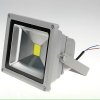Slipon
Well-Known Member
Hey Guys/Galz
I´ll try to keep it short and simple
Would love to build a LED Panel one day, but Im no Electrician, Im a Stainless steel smith, so have some basic knowledge's and access to aluminum/steel and tools aso.
What I would like to do is build the most simple Panel, I don't care so much about $ per Watt or absolute best quality, or for that matter the cheapest solution, what I look for is a simple way to build a panel to cover about 3x4 ft and grow some dense Dank, not the cheapest way or the best or with the least watt used, more like with the least work for me, specially stuff like wiring and connect up different drivers and what els you need to make it shine
I know you need a heat sink and I bet I could come up with some thing for that, now one of my questions is that if I use a good/big enough heat sink (could just use it as the panel itself) would I then need to add fans ? (would love to avoid the more wiring and noise)
maybe if I get some quality LEDs and don't go higher then 3W and then run em with some quality drivers with out max em out (maybe run em a bit "low"/less then 2W/different mA ?) don't care if I need to add more LEDs to get the same strength if it mean I can run em with out fans and maybe even make em last longer ?
I would like to spread the LEDs out quite a bit any way as I would like to make it to cover all of my 3x4 ft room or close (need some room to work with) maybe use about 300W in a mix of white and red (I guess it would be 5000K and a mix of 630 and 660 or similar)
Now I know there are them multi chips and the cup reflectors (just saw some of you guys post em the other day) and I know I would have to add a lot of single 3W chips if I would like to cover my 3x4 ft with 300 true watt if I run em on less then 2W each, so I guess my second question would be what kind of LEDs would be the most easy to use ? agin I don't care so much if the kind is the most effective (I add a few more) or the cheapest (I only need to build one Panel) would less 5W or even 10W work ? or would they need a fan to keep em cool ? I saw them flood lights and they run up to 50W (maybe more) with out any fans ?
I guess thats it for now, Im sure I can come up with more questions as we go along
I´ll try to keep it short and simple
Would love to build a LED Panel one day, but Im no Electrician, Im a Stainless steel smith, so have some basic knowledge's and access to aluminum/steel and tools aso.
What I would like to do is build the most simple Panel, I don't care so much about $ per Watt or absolute best quality, or for that matter the cheapest solution, what I look for is a simple way to build a panel to cover about 3x4 ft and grow some dense Dank, not the cheapest way or the best or with the least watt used, more like with the least work for me, specially stuff like wiring and connect up different drivers and what els you need to make it shine
I know you need a heat sink and I bet I could come up with some thing for that, now one of my questions is that if I use a good/big enough heat sink (could just use it as the panel itself) would I then need to add fans ? (would love to avoid the more wiring and noise)
maybe if I get some quality LEDs and don't go higher then 3W and then run em with some quality drivers with out max em out (maybe run em a bit "low"/less then 2W/different mA ?) don't care if I need to add more LEDs to get the same strength if it mean I can run em with out fans and maybe even make em last longer ?
I would like to spread the LEDs out quite a bit any way as I would like to make it to cover all of my 3x4 ft room or close (need some room to work with) maybe use about 300W in a mix of white and red (I guess it would be 5000K and a mix of 630 and 660 or similar)
Now I know there are them multi chips and the cup reflectors (just saw some of you guys post em the other day) and I know I would have to add a lot of single 3W chips if I would like to cover my 3x4 ft with 300 true watt if I run em on less then 2W each, so I guess my second question would be what kind of LEDs would be the most easy to use ? agin I don't care so much if the kind is the most effective (I add a few more) or the cheapest (I only need to build one Panel) would less 5W or even 10W work ? or would they need a fan to keep em cool ? I saw them flood lights and they run up to 50W (maybe more) with out any fans ?
I guess thats it for now, Im sure I can come up with more questions as we go along








